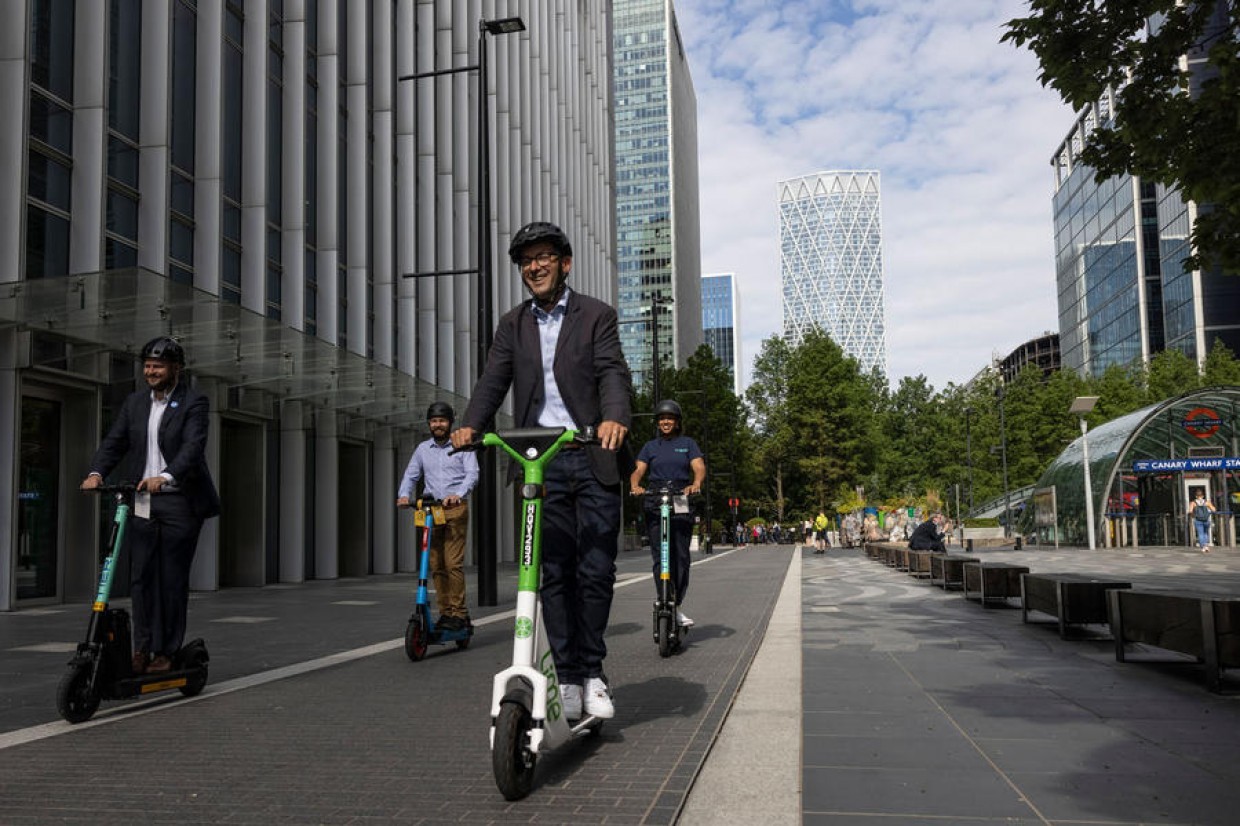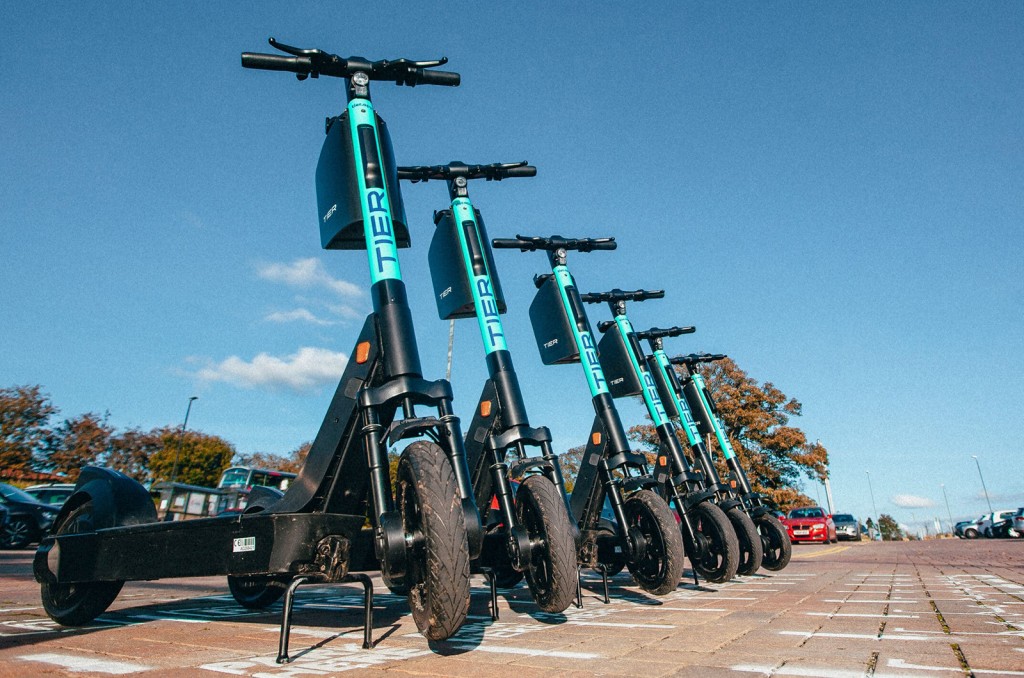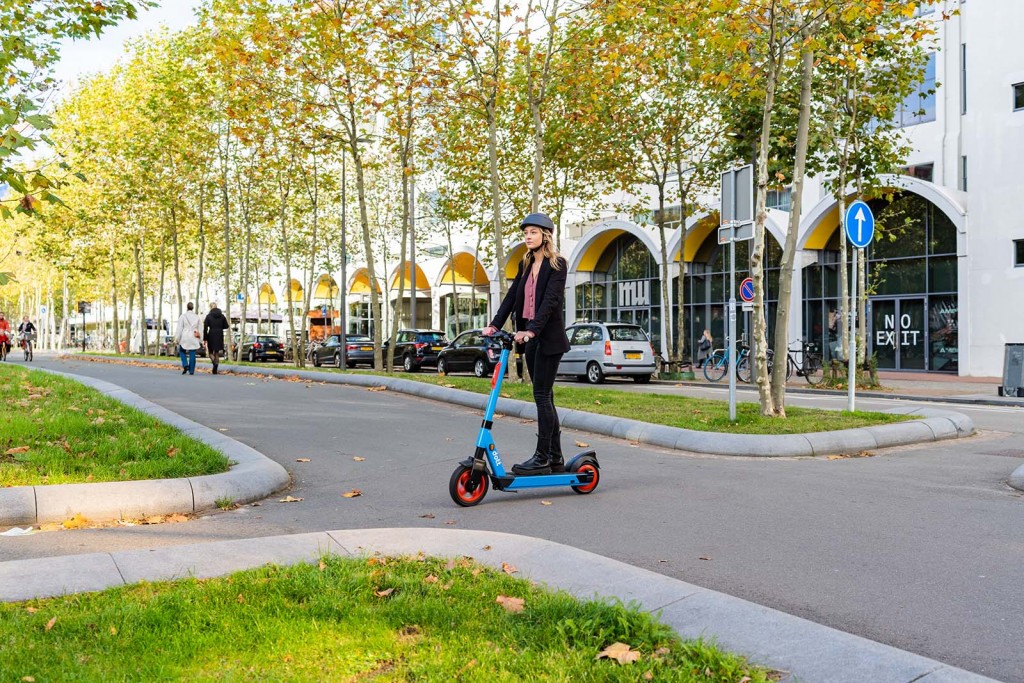
The Department for Transport has just published an independent report evaluating the ongoing national e-scooter rental trials – and it’s a bit of a monster.
The report, which was compiled by Arup and NatCen, is more than 100 pages long, and covers the initial trial period that ran from July 2020 until December 2021. It contains detailed information on how many journeys were made on e-scooters, who was riding them, their safety, public perceptions, impact on other road users and more.
The key takeaway is that rental e-scooters can be a valuable part of the transport mix in the UK. But there’s plenty more in there, so we’ve dug through to pick out some of the more interesting bits.
Confused about e-scooters? Find out all about their legal status here
E-scooters were popular – and their usage changed over time
In total, 14.5 million rental e-scooter trips were recorded from July 2020 until the end of December 2021. Around 23,000 e-scooters were deployed, with the average trip covering 1.4 miles and lasting 14 minutes.
An emphasis of the e-scooter trials was to try and switch people out of cars into smaller, less polluting forms of transport. But in December 2021 42 per cent of users said that they would have walked instead of using an e-scooter on their last trip, compared to 21 per cent who said they would have used private transport (a car, van or taxi).
Crucially though, the number of e-scooter journeys that replaced walking trips reduced by the end of the trial period: ‘mode shift’ from walking dropped by seven per cent from March 2021 until December 2021 – while the number of riders switching from private vehicles rose by nine per cent.

Over the same period, the number of e-scooter trips used to travel to a specific location increased, suggesting that users with experience increasingly worked the machines into their routines.
Commuting to and from work was the most popular reason people rented an e-scooter, accounting for 33 per cent of trips in December 2021.
A key reason for the government approving the e-scooter trials was to move towards zero carbon travel, and based on the number of rides that replaced car journeys it estimated a total reduction of 249 to 348 tonnes of CO2e from July 2020 until December 2021.
People who’ve rented an e-scooter are interested in buying one
By the end of the December 2021 there were 1.4 million registered users, with 229,000 active users.
A demographic survey that was part of the report found that 71 per cent of e-scooter users were male, and 74 per cent were under the age of 35. Rental operators have put a focus on trying to improve uptake and accessibility for both women and older users, and the survey suggests more is to be done in that area.
The survey also found that users from ethnic minority groups, and users from low incomes, were more likely to be frequent users than other groups, showing how e-scooters can provide mobility options to new groups of people.
.jpg)
Around one in ten residents of trial areas said they had rented one, with 34 per cent of people saying they hadn’t yet but were keen to do so in future. Interestingly, of those who had used an e-scooter 69 per cent expressed a preference to own one in future, with just 31 per cent saying that would rather rent one.
Of the residents in trial areas who had not rented an e-scooter, 63 per cent said they weren’t motivated or interested, while 46 per cent cited safety concerns.
E-scooter inexperience is a key factor in collisions
Five per cent of rental e-scooter users reported experiencing a collision in the last year, according to the user survey that was part of the report. Notably, less experienced riders were more likely to be involved in a collision.
The most common reasons for a collision were rider error (40 per cent) or the road layout or surface (30 per cent). Single-vehicle incidents were the most common type reported. In total, 63 per cent of e-scooter users who had been involved in a collision reported some level of injury, although 47 per cent of those were minor, such as cuts and bruises.
Are e-scooters legal in the UK? Move Electric's definitive guide
The Department for Transport regularly publishes road casualty data that includes e-scooters, although the data is limited: not every police force distinguishes between private and rental e-scooters, for example.
.jpg)
The report has used the DfT data to calculate a casualty rate across six trial areas that do record the type of e-scooter involved in an accident
Asked about what could help improve safety, most users and residents in trial areas cited road infrastructure factors, such as having a dedicated lane.
It found that there were approximately 13 casualties per million miles, which is around three times higher than the 3.9 casualties per million rate for pedal cycles. It did not that the gap might be inflated because e-scooters are still relatively new, and there are more accidents among inexperienced riders.
But the report also highlighted a Liverpool University Hospital study that found rates of musculoskeletal injuries caused by rental e-scooter collisions were similar to those sustained in bike injuries
Riders feel safe – but they do have concerns
The majority of riders (79 per cent) said that they felt fairly safe or very safe riding a rental e-scooter, and that increased as people used them more. In particular, the visibility of rental e-scooters – they’re usually brightly coloured and all have lights fitted – helped riders to feel more visibly, although there were concerns about whether the lights were bright enough at night.
 Users also felt that the infrastructure and quality of roads needed to be improved to aid safety, particularly citing a lack of segregated lanes away from other vehicles. But while most riders did feel safety in cycle lanes, some did cite concerns of cyclists riding ‘aggressively’.
Users also felt that the infrastructure and quality of roads needed to be improved to aid safety, particularly citing a lack of segregated lanes away from other vehicles. But while most riders did feel safety in cycle lanes, some did cite concerns of cyclists riding ‘aggressively’.
Also, the majority of e-scooter riders considered the machines less safe than other forms of transport – with the example of mopes and motorbikes.
Pedestrians remain concerned about e-scooters
Interestingly, residents in trial areas were more likely to feel positive around e-scooters than the way e-scooters were used. Just over half (51 per cent) saw the introduction of e-scooter trials in their area as positive, but only 31 per cent felt that e-scooter riders were respectful of pedestrians.
E-scooter approval was also higher in younger people: 65 per cent of those aged 18 to 34 thought they were a welcome addition to their area, compared to 29 per cent of the over 55s.
.jpg)
The report did note that there were limitations with the data, with 18 per cent of those quizzed said they were unable to tell the difference between rental e-scoters and private ones – which remain illegal to use in the UK.
It found that only a minority of residents feel safe around e-scooters. While concerns among younger residents fell over time, they remainder steady in older residents, and the report noted that further measures are required to make sure all road and pavement users feel safe around them.
The biggest concerns among people who felt unsafe centres around dangerous riding, including ignoring traffic lights (77 per cent), riding on pavements (72 per cent) and speed (67 per cent).
Two thirds (66 per cent) of residents in trial areas also said they would feel safer with better enforcement of the laws around e-scooter usafe, while the survey also highlighted better lights (56 per cent), increased helmet use (50 per cent) and licence plates (50 per cent) as steps that would make them feel safer. Notably, the government has since toughened up the lighting requirements and introduced licence plate-style identifiers.
